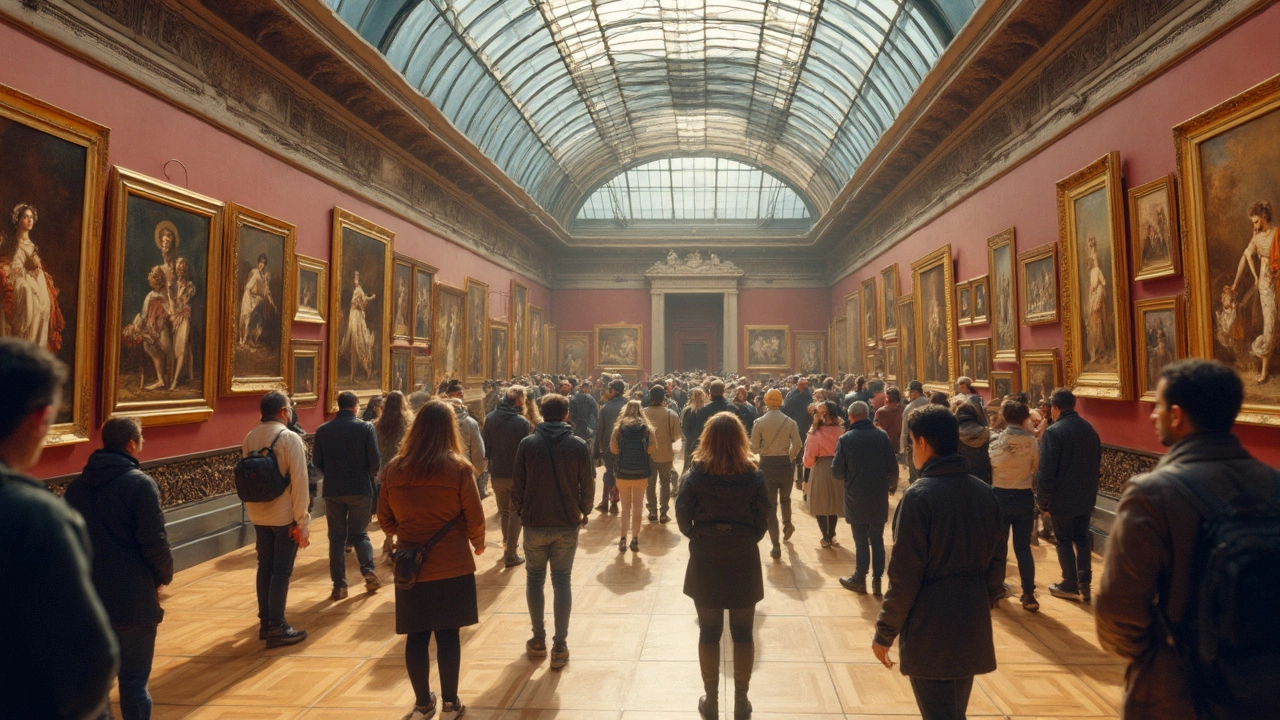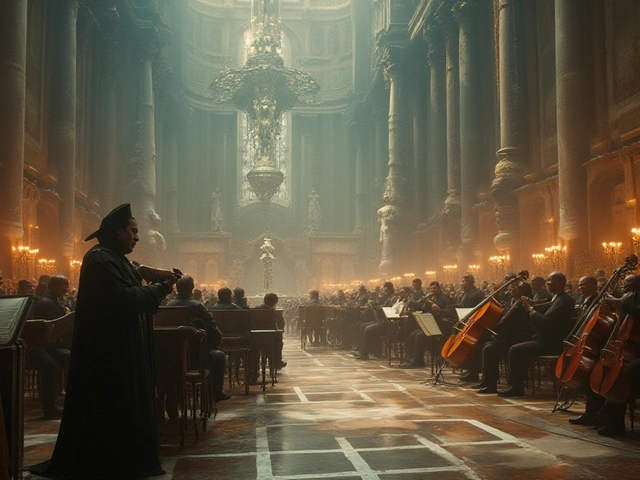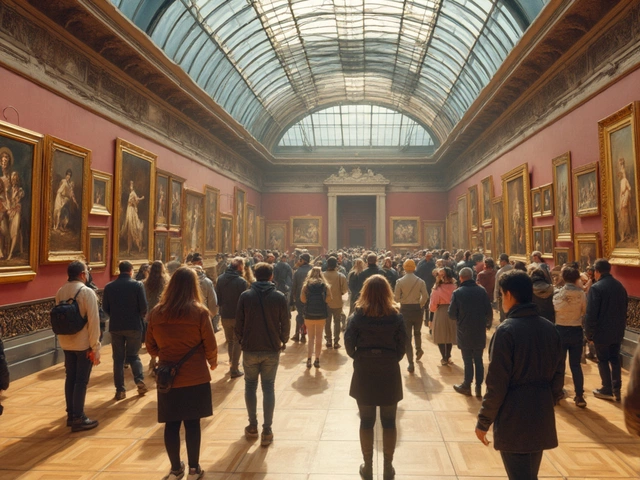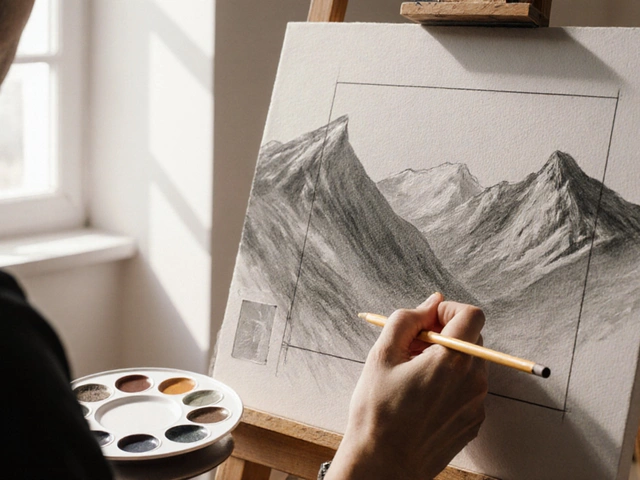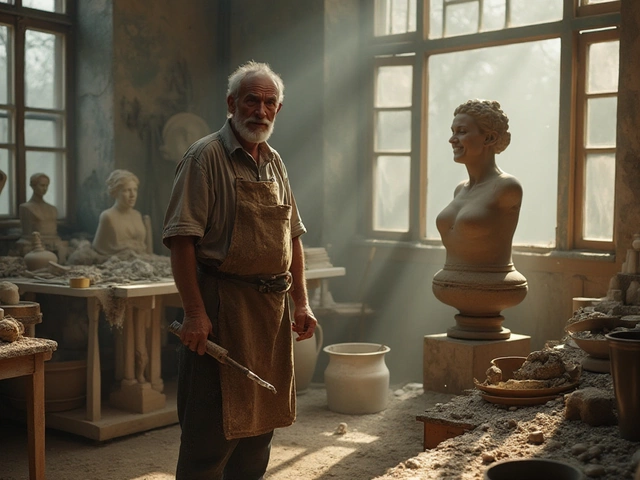Fine art and modern art sound like they should be totally separate worlds, but walk into a gallery and even the staff might argue about what belongs in which group. The funny thing? The lines aren’t as clear as you’d expect. One painting looks like a classic masterpiece, another looks like a messy experiment—and both might be hanging just a few meters apart.
Why does this matter? Well, if you’re hunting for new art for your apartment, or trying to act smart on a date at the museum, knowing the difference can be a lifesaver. Plus, understanding what makes these styles tick will help you appreciate why that odd sculpture people like to poke fun at is actually worth a closer look.
It’s not about memorizing a bunch of dates or getting sucked into fancy art lingo. Once you pick up a few simple clues, you’ll start seeing patterns everywhere—whether you’re looking at a marble statue, a wild splash of color, or a painting that looks like a photo. Ready for the cheat sheet? Let’s break it all down, no snobby explanations needed.
- What is Fine Art Anyway?
- How Did Modern Art Shake Things Up?
- Telling Them Apart—The Key Clues
- Handy Tips for Enjoying Both
What is Fine Art Anyway?
Ask anyone to picture fine art and most people imagine oil paintings of kings, marble statues, or big gold-framed canvases that probably cost a small fortune. This type of art sticks to what’s been considered ‘classic’ for centuries—stuff like painting, sculpture, drawing, and a little bit of printmaking.
Fine art is all about skill and tradition. For a long time, artists had to train for years to get even close to the standards the art world expected. Think of Leonardo da Vinci, Michelangelo, or Rembrandt. These folks spent their lives perfecting things like anatomy, perspective, and mixing paints by hand. You won’t see technology or random splashes here—everything is about showing off real craft.
One thing to know: fine art was meant to be beautiful, to inspire emotion, or just show off human talent. The themes? Lots of religious stories, mythological scenes, portraits of important people, nature, and epic battles. Museums are filled with these because, for ages, this was what people thought ‘real art’ looked like.
Here’s a handy cheat sheet of what falls under fine art:
- Oil and watercolor paintings (portraits, landscapes, historic scenes)
- Marble or bronze statues (think David, Venus de Milo)
- Drawings and sketches (often studies for bigger works)
- Etchings, engravings, and woodblock prints
Why does it matter? When you spot these in a museum, you’re usually looking at work that set the rules for everything that came later—including modern art. This is the reason you hear so much about ‘Old Masters.’ Fine art is the foundation, the thing most newer styles are reacting to—or sometimes rebelling against.
There’s also money in the mix. In 2023, auction houses like Sotheby’s and Christie’s still moved fine art pieces for millions—more than most modern works. Fine art might feel old-fashioned, but it’s not out of style for collectors.
| Fine Art Medium | Typical Subjects |
|---|---|
| Oil Painting | Portraits, landscapes, historical scenes |
| Sculpture | Mythological figures, public memorials |
| Drawing | Studies, nudes, sketches for paintings |
| Engraving | Stories from religion, epic events |
If you come across detailed technique, grand subjects, or jaw-dropping skill, chances are you’re looking at fine art. Next up, we’ll see how modern art basically flipped the script.
How Did Modern Art Shake Things Up?
If you think modern art is just about weird shapes or random splashes of paint, hold on. The whole point of modern art was to break away from old rules and surprise people. It kicked off in the late 1800s, when artists got fed up with painting perfect portraits or landscapes just to match what rich people wanted on their walls.
This was their way of saying, “Why should art always look realistic or pretty?” So, artists like Picasso started playing with wild colors, weird angles, and shapes that made people do a double-take. Monet’s blurry water lilies were a big deal because he was focusing more on how things felt in the moment—less about details, more about vibes.
As time went on, modern artists kept pushing the limits. Want some real examples? Here are a few famous game changers:
- Pablo Picasso – Messed with the idea of perspective; sometimes he’d paint someone’s face with two angles in one picture.
- Marcel Duchamp – Put a regular urinal in a gallery and called it art just to make people think.
- Wassily Kandinsky – Created some of the first totally abstract paintings; his work had zero actual people or objects, just color and shapes.
The fun part? Modern art wasn’t just about painting. Sculpture, photography, even collages became part of the scene. Artists started using everyday stuff—like soup cans or metal scraps—to create art. Suddenly, anyone could throw something unexpected into a gallery and make people talk.
And get this: Around 1913, more than 80,000 New Yorkers visited a big modern art show called the Armory Show. People argued like crazy about what counted as art. That edge, that willingness to stir things up, is exactly what makes modern art stand out today.
| Key Change | Traditional Fine Art | Modern Art |
|---|---|---|
| Subject | History, religion, formal portraits | Everyday life, abstract ideas, emotions |
| Materials | Oil, marble, wood | Anything: metal, found objects, new tech |
| Strategy | Follow the rules | Break the rules |
When you look at modern art next time, remember: you’re seeing a rebellion. It’s art with the brakes off, made by people who wanted to get your attention, start an argument, or just show the world in a brand-new way.
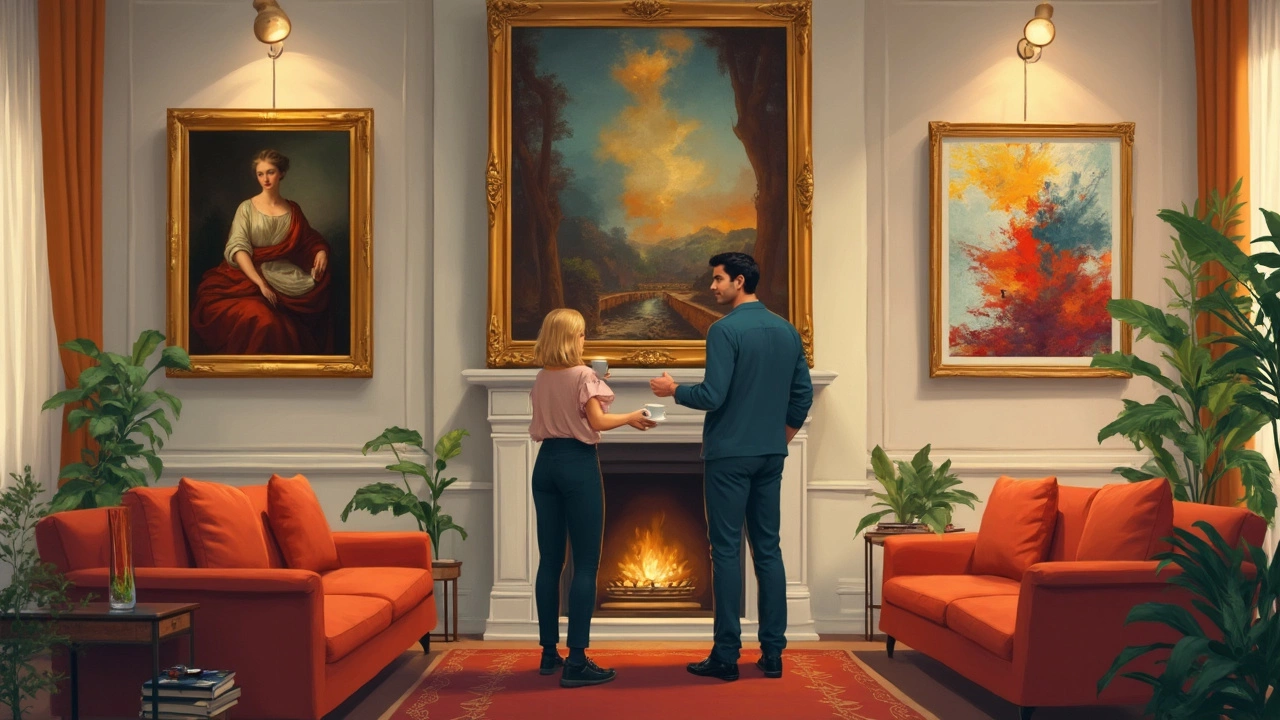
Telling Them Apart—The Key Clues
Distinguishing fine art from modern art doesn’t have to give you a headache. There are a few concrete things to look for, and once you know them, it’s like flipping on a light switch in a dark room. Here are the biggest clues people usually miss:
- Time period: This one’s surprisingly straightforward. When folks talk about fine art, they’re almost always thinking of stuff made before the 20th century. Michelangelo, Da Vinci, Rembrandt—all those classics. Modern art kicked off in the late 1800s and really exploded around 1900. So, if the art looks older than your great-grandparents, chances are it’s fine art. If it’s wild, bold, or even a bit weird, it probably falls under modern art.
- Technique and subject: Fine art leans on tradition—realism, perfect proportions, and loads of training. Modern art? It often ditches the ‘rules’ on purpose. You’ll see odd angles, wild colors, or totally new materials. A painting of a bowl of fruit done to impress a king? Fine art. An abstract block of color that makes you squint? Probably modern art.
- Purpose and message: Fine art was about skill, beauty, or sometimes religion. Modern art isn’t afraid to shock, question, or make you uncomfortable. Ever see a painting of a soup can or an empty white canvas? That’s a modern artist poking the system.
- Materials: Fine art mostly sticks to oil paint, marble, bronze, and canvas. Modern art? Almost anything goes—scrap metal, plastic, trash, even digital screens. In 2019, someone taped a banana to the wall and called it art (yep, "Comedian" by Maurizio Cattelan at Art Basel Miami). That’s modern, all the way.
If you ever get stuck, you can look for these typical differences:
| Fine Art | Modern Art |
|---|---|
| Pre-1900s | Late 1800s–1970s |
| Realistic, detailed, traditional | Experimental, abstract, bold |
| Classical themes—religion, portraits, landscapes | Everyday objects, feelings, new ideas |
| Oil, marble, bronze | Anything—mixed media, found objects |
Why does this matter? If you want to sound like you know your stuff, or even start collecting, recognizing these clues takes the guesswork out of the picture. Next time you’re in a museum and someone says, "Is this really art?" you’ll have the facts to answer (and maybe win the argument).
Handy Tips for Enjoying Both
So, you’re at a museum or scrolling through art online and you spot both fine art and modern art. How do you make sense of it all—and actually have some fun? Here are some tips to help you skip the confusion and get right to the good stuff.
- Check out the labels. Sounds basic, but museum and gallery labels usually list the year, movement, and style. If you see anything dated before the 1860s, you’re probably looking at fine art. Anything from the late 19th century through the 1970s likely falls under modern art.
- Ask questions—there’s no shame. Gallery staff and museum folks love to talk. If you’re unsure, just ask which works are examples of modern art or fine art. You’ll usually get extra stories or facts you’d never find on a wall label.
- Don’t just look—notice what you feel. Fine art usually aims to capture beauty or tell a story, and it’s okay if you just like the way a piece looks. Modern art sometimes tries to mess with your expectations—so if it seems weird, ask yourself why. Often, the artist wants you to react, even if you don’t understand every brushstroke.
- Create your own favorites list. Whether you love the realism of old-school fine art or vibe with the chaos in modern art, make a note (even snap a phone pic if allowed). This helps you spot patterns in what you enjoy the next time you browse art.
According to the 2023 Art Institute of Chicago visitor stats, more people under 30 spent time in modern art exhibits compared to fine art galleries—by nearly 18%. That doesn’t mean you’re supposed to choose sides, but it does show how interests can shift with either style.
| Style | Typical Materials | Popular Example |
|---|---|---|
| Fine Art | Oil paint, marble, canvas | Leonardo da Vinci's "Mona Lisa" |
| Modern Art | Anything goes—collage, found objects, acrylic | Pablo Picasso's "Les Demoiselles d'Avignon" |
The trick is to stop worrying about picking the “right” style or understanding every reference. Just show up, look around, and let your own taste be your guide. The best part? The only opinion that counts when enjoying fine art or modern art is yours.
